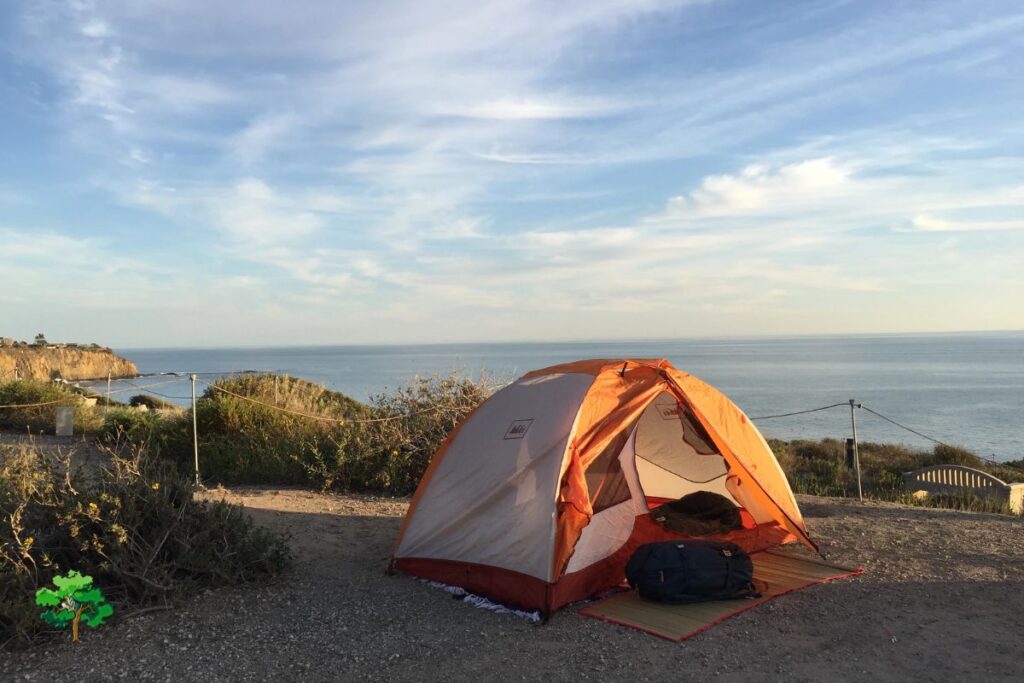Join us in Yosemite & beyond in our journey through National Parks in California with Bears—unforgettable tales!
Ready to tiptoe through the California wilderness on a bear-seeking adventure? Join us as we recount our up-close encounters in the land where bears roam free!
These national parks aren’t just postcard-perfect; they’re the playgrounds of the California black bear. From the soaring trees of Yosemite to the mystic fogs of the Redwoods, we’ve tracked paw prints, marveled at their might, and learned why these furry giants are more than just a thrilling sighting—they’re the guardians of the forest!
Buckle up, and let’s journey through California’s diverse backcountry, where every whispering pine and babbling brook could lead to the thrill of a bear sighting.
So, pack your sense of adventure (and maybe some bear spray), and let’s dive into the wild, bear-filled parks of California!
The Types of Bears in California
In the vast and varied landscapes of California, whispers of a time long past can be felt in the gentle rustle of its ancient forests and the murmur of its mighty rivers.
Amidst the canopy of trees and rugged terrains, two magnificent creatures once staked their claim: the California black bear and the formidable grizzly bear.
The California black bear, with its sleek fur glistening like moonlit obsidian, is the state’s most prevalent ursine resident.
Agile climbers and keen foragers, these bears traverse the dense woodlands and open meadows, reminding us of nature’s enduring legacy.
Their adaptability and resilience have ensured their continued presence, a living emblem of the wild heart that beats within the state’s boundaries.
The grizzly bear, a behemoth of immense power and presence, once roamed these lands too.
This majestic titan, with its ferocious strength and deep-set eyes, was an icon of California’s wild frontier.
But, alas, as the pages of history turned and human endeavors encroached upon their territories, the grizzlies faded away, now extinct within California’s borders.
Their absence serves as a solemn reminder, echoing the fragility of life and the profound consequences of our actions upon the tapestry of nature.
10 Places in California to See Bears
In the vast expanse of California, a journey awaits, where shadows of magnificent bears grace the wilderness. Here are ten sanctuaries where these majestic creatures etch their tales onto nature’s canvas.
Yosemite National Park
Yosemite National Park, blessed with the mighty Sierra Nevada Mountains, is a realm of astounding natural splendor. Here, titanic granite monoliths stand sentinel over serene valleys, and ancient sequoias touch the very heavens.
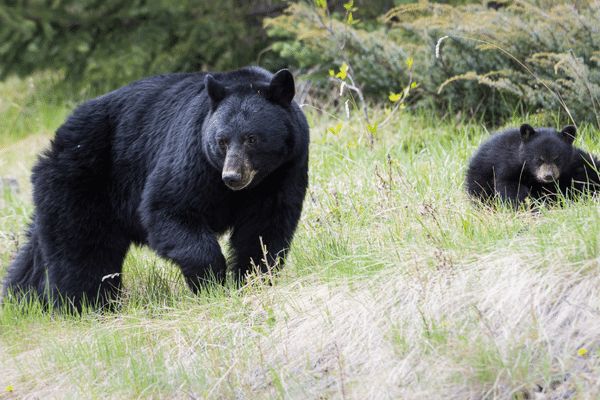
But amidst its echoing canyons and shimmering waterfalls, a quieter spectacle unfolds – the dance of the California black bear.
These magnificent creatures have etched their existence onto Yosemite’s vast tapestry. The expansive meadows of Yosemite Valley, blooming under the gentle warmth of spring, often find bears ambling, their eyes keen, noses twitching for nature’s offerings.
As summer’s embrace deepens, the bear’s quest might lead you to the serenading pathways of the Mist Trail or perhaps the panoramic expanses near Glacier Point.
Campers, especially those settling in the valley’s heart at sites like Curry Village, often trade tales of bears’ moonlit forays.
As autumn’s golden hues drape the park, the oak-rich highlands resonate with the soft rustling of bears seeking acorns, preparing for winter’s impending stillness.
A journey through Yosemite, then, isn’t just a communion with nature’s grandeur, but a pilgrimage in the silent footprints of its most revered inhabitants.
Also read: 16 ANIMALS IN YOSEMITE NATIONAL PARK YOU WILL SEE WHILE HIKING HERE!
Sequoia and Kings Canyon National Parks
Sequoia and Kings Canyon National Parks, where the Earth seems to touch the skies, are the epicenters of nature’s magnificent narratives.
Here, gargantuan sequoias ascend towards the heavens, their roots entrenched deep within a history that spans millennia.
But among these ancient trees, another tale unfolds – that of the resilient California black bear.
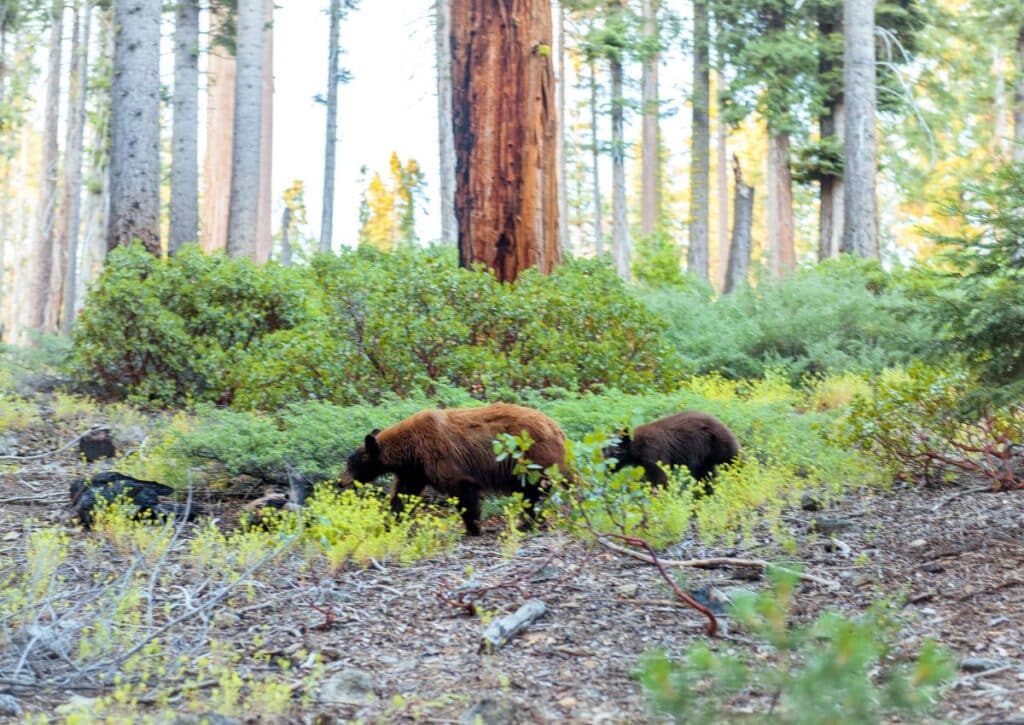
These twin parks have become pivotal arenas for bear conservation. As human footprints expanded, they stood as bulwarks, ensuring that the bears’ domain remained untouched, pristine.
Pioneering conservation efforts have borne fruit here, allowing the bear population to thrive, an emblem of coexistence and nature’s perseverance.
For those with an adventurous spirit and watchful eyes, the parks’ vast expanses offer delightful encounters. Near iconic landmarks, such as the colossal General Sherman Tree or the deep chasms of Kings Canyon, one might catch a fleeting glimpse of a bear, its silhouette harmoniously set against these ancient backdrops.
The ever-shifting Meadows in Kings Canyon often resonate with the soft pad of bear paws, while the Giant Forest in Sequoia becomes a stage where bears occasionally wander, casting fleeting shadows amidst the world’s largest trees.
In these parks, every winding trail, every silent grove holds a promise – the chance to witness nature in its most raw and untamed splendor.
Lassen Volcanic National Park
Nestled in the northern reaches of California, Lassen Volcanic National Park stands as a testament to the Earth’s fiery past and ever-evolving present.
Here, a rich tapestry of geothermal wonders – from bubbling mud pots to steaming fumaroles – narrates tales of the planet’s tumultuous heart.
Amidst these dramatic geological displays, the park also cradles a vibrant ecosystem where the California black bear finds sanctuary.
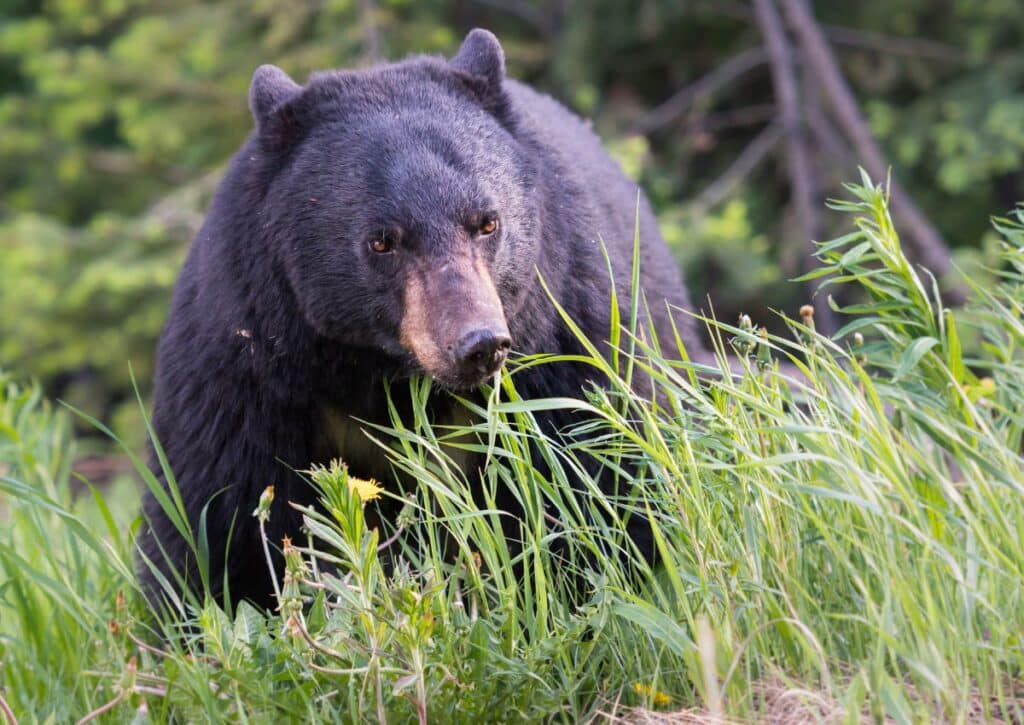
The varied topography, born from volcanic eruptions and shaped over millennia, has carved out diverse habitats that these bears have adeptly made their own.
The park’s alpine meadows, adorned with wildflowers, often see bears meandering in search of berries and roots. As one wanders deeper, the dense forests of fir and pine provide cool retreats, offering the bears respite and seclusion.
The juxtaposition is captivating. On one hand, the ground’s heat showcases nature’s raw power, and on the other, the gentle rustling of a bear foraging nearby is a serene reminder of the enduring cycle of life.
Lassen Volcanic National Park, thus, invites its visitors to a dance of contrasts, where the primal forces of geology and the gentle rhythms of wildlife exist in harmonious balance.
Redwood National and State Parks
In the cool, mist-laden corner of California’s northwest, the Redwood National and State Parks rise as silent sentinels of time.
Here, the colossal redwoods, ancient and unyielding, stretch skyward in a relentless pursuit to touch the cosmos.
These titans, some predating the Roman Empire, harbor a universe beneath their vast canopies—a world teeming with the hushed whispers of countless creatures, including the enigmatic California black bear.
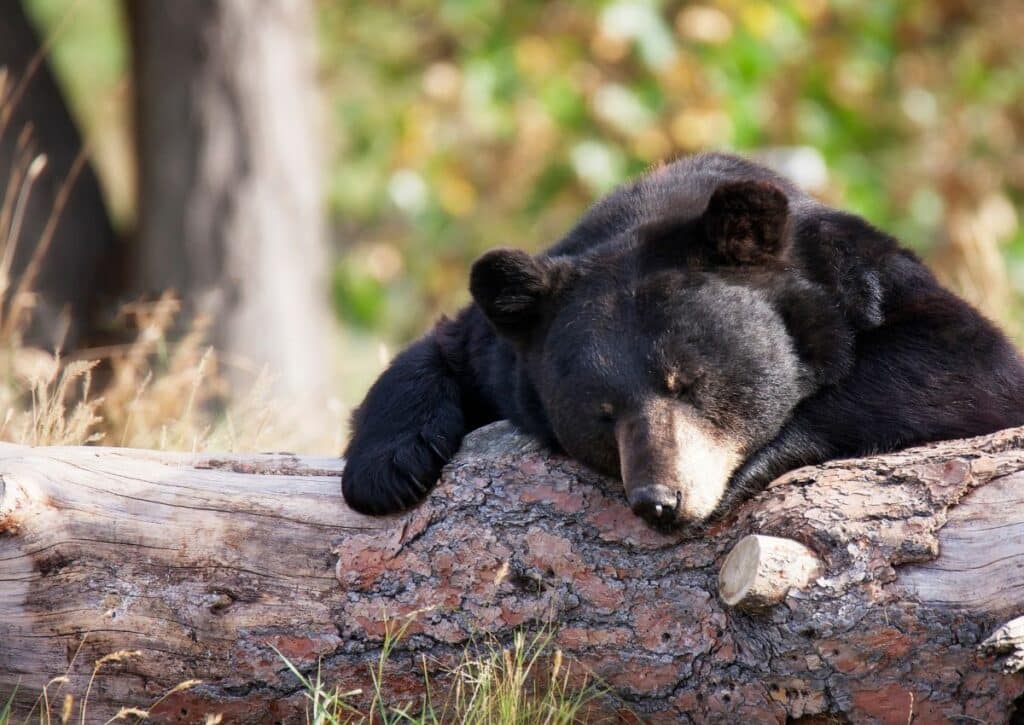
Nestled under these towering giants, the forest floor is a mosaic of dappled light and shadow, where bears trace their age-old paths.
These coastal forests, often cloaked in a gentle fog, provide a cool and nurturing habitat. Bears, in their solitary elegance, wander through fern-clad groves, their presence occasionally betrayed by a rustle or a distant silhouette against the verdant backdrop.
For the observant traveler, the parks offer moments of serendipity.
Near the ethereal Stout Grove or along the meandering paths of the Prairie Creek area, one might chance upon a bear, its form momentarily framed by the massive trunks of the tallest trees on Earth.
In the heart of Redwood National and State Parks, life unfolds in layers of wonder, from the towering pinnacles above to the intricate dance of wildlife below.
Mendocino National Forest
In the undulating landscapes of Northern California, the Mendocino National Forest unfolds like a verdant dream.
A realm untouched by modern highways, it beckons with the whispered secrets of its dense forests and shimmering lakes.
Amidst the cacophony of birdcalls and the gentle rustling of leaves, the California black bear finds solace and sustenance in this pristine haven.
The forest’s lush canopy, interspersed with open meadows, creates a tapestry of habitats for these magnificent creatures.
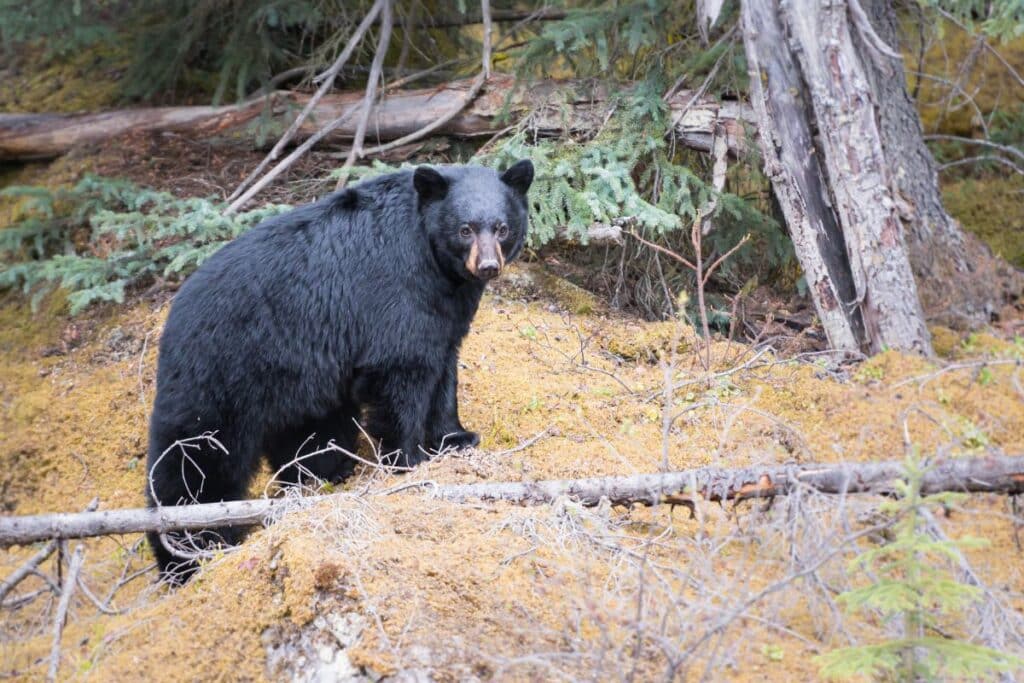
The serene lakes, bordered by dense thickets, often bear silent witness to bears quenching their thirst or foraging along their banks in the soft glow of dawn or dusk.
For those who tread its paths with reverence and curiosity, a few guidelines can enhance the experience. While traversing areas like the Eel River or Grindstone Canyon – frequented by bears – it’s wise to make gentle noise, ensuring you don’t surprise these wild residents.
Always maintain a respectful distance, storing food securely and disposing of waste responsibly to preserve the natural behavior of these animals and ensure a harmonious coexistence.
The Mendocino National Forest is a testament to nature’s bounty and balance; to visit is to step into a world where human and wildlife threads interweave in a delicate, age-old dance.
San Bernardino National Forest
Amidst the bustling energy of Southern California, the San Bernardino National Forest emerges as a verdant oasis, a wild refuge that contrasts the urban sprawl.
Stretching across vast landscapes, this forest is a mosaic of rugged mountains, their peaks often kissed by the clouds, and sprawling woodlands that echo with the songs of its countless inhabitants.
Nestling within these altitudinal shifts and diverse terrains, the California black bear carves its niche. The mountains, with their cascading streams and hidden glades, offer cool retreats, especially during the heat of summer.
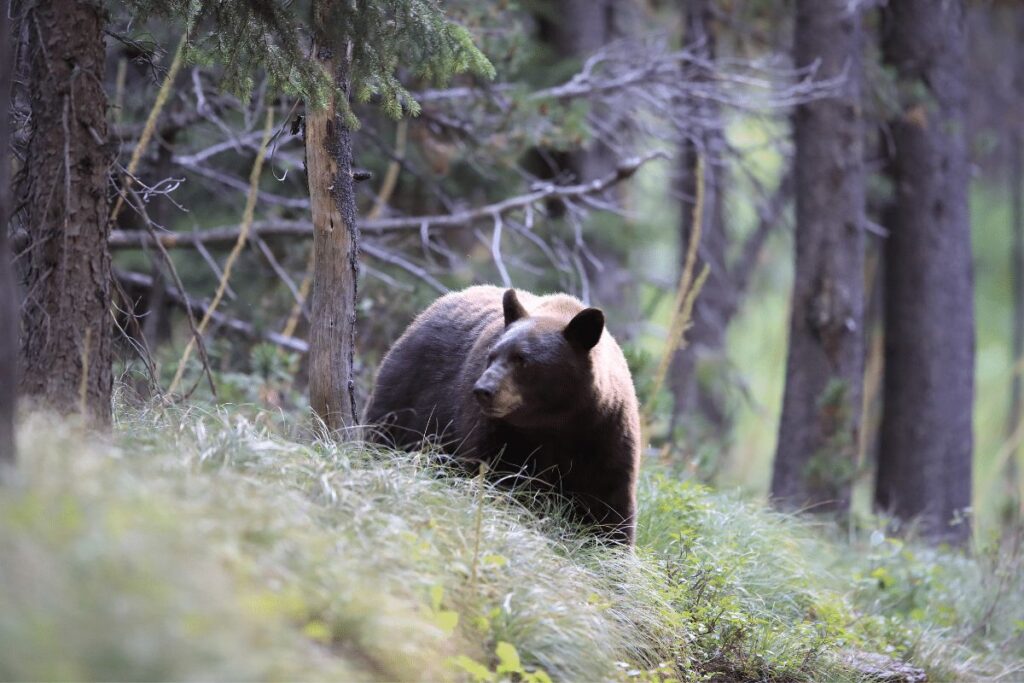
Down in the woodlands, the dense canopy provides both shelter and a smorgasbord of forage, from berries to nuts.
For the intrepid explorer, certain areas of this forest hold promises of magical encounters. The vicinity around Big Bear Lake, with its mix of water source and wooded expanses, often resonates with telltale signs of bear activity.
Deep Creek and the areas surrounding Lake Arrowhead, too, have been known to be stages for the bear’s quiet ballet, especially during dawn and twilight.
The San Bernardino National Forest beckons with tales of nature’s splendor, where every rustle might be a footprint, every shadow might tell a story, and every visit is an immersion into a world where mountains and forests conspire to showcase the beauty of the wild.
Also Read: 15 BIRDS AND ANIMALS IN SAN BERNARDINO NATIONAL FOREST WE SAW ON OUR CAMPING TRIP
Sierra National Forest
Beyond the bustling valleys and rolling foothills of California lies the Sierra National Forest, a realm where mountain majesties converse with the sky.
Rugged peaks, draped in blankets of evergreens and punctuated by granite outcrops, form a landscape that whispers tales of geological epochs past.
Amidst this rugged beauty, where alpine meadows bloom and rivers carve their way, the California black bear finds a home, thriving in the embrace of these ancient elevations.
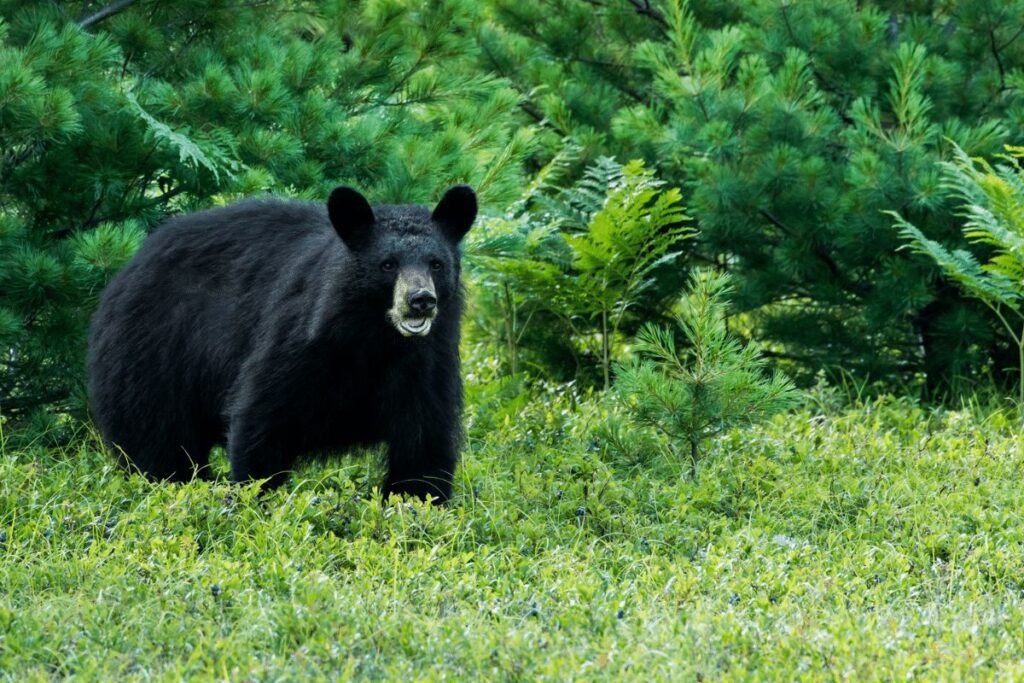
These mountainous terrains, with their intricate tapestry of valleys and ridges, offer both refuge and sustenance for the bears.
At higher elevations, snowmelt-fed streams become favored spots, while the lush valleys below teem with berries, nuts, and myriad other delicacies that beckon the bears to forage.
The forest, with its intertwining trails, offers the observant traveler glimpses into the world of these magnificent residents.
A soft footprint beside a stream, a distant silhouette against the backdrop of a sunset-hued peak, or the gentle rustling in a thicket could all herald the presence of a bear, continuing its age-old dance with the mountains.
In the heart of the Sierra National Forest, the rhythm of life beats in tandem with the pulsing heights and depths of the land, painting a portrait of nature in its grandest form.
Tahoe National Forest
Tahoe National Forest, where crystalline waters meet verdant woods, stands as an emblem of nature’s artistry in Northern California.
This vast expanse, home to the iconic Lake Tahoe and numerous smaller alpine lakes, provides a serene backdrop for many of nature’s dramas, including those that feature the region’s majestic resident, the California black bear.
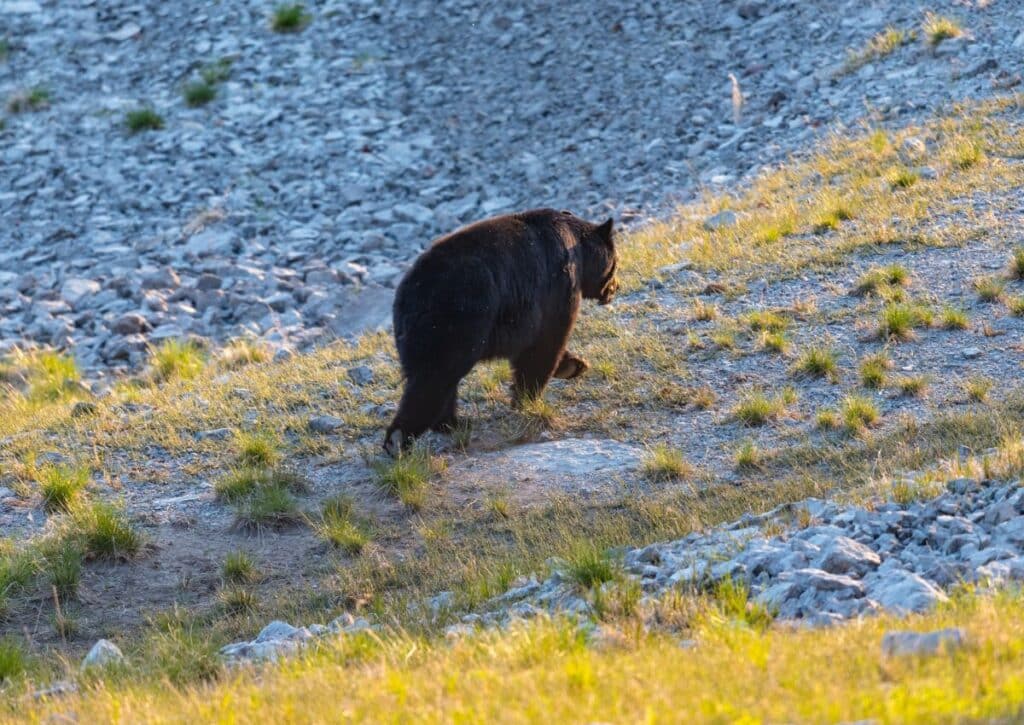
Fringing these lakes, especially during the warm embrace of summer, bears often emerge, their silhouettes mirrored in the tranquil waters.
Whether they’re skirting the banks of Lake Tahoe at dawn or ambling by the quieter shores of Bowman Lake, these creatures seem to be in tune with the rhythmic lapping of the waters.
However, to truly appreciate these lakeside encounters, one must delve into understanding the behavior of these magnificent beasts. In Tahoe National Forest, bears are often driven by the natural cycles of food and shelter.
The lakeshores, rich in aquatic vegetation, insects, and accessible water, become prime foraging grounds. Yet, they are also creatures of caution, and any sudden movement or noise can send them retreating into the dense woods.
To wander in Tahoe National Forest is to step into a realm of reverence and wonder.
Here, amidst the shimmering blues and deep greens, one learns the delicate dance of observing nature, appreciating its beauty, and understanding the intricate behaviors of its inhabitants.
Angeles National Forest
In the shadows of the sprawling metropolis of Los Angeles, the Angeles National Forest unfurls as a testament to nature’s resilience and splendor.
It stands juxtaposed against the city’s skyline, a green sanctuary offering reprieve from urban cacophony.
This proximity creates a unique tableau where the pulsating life of one of the world’s most iconic cities meets the undisturbed rhythms of the wild, with the California black bear emblematic of this coexistence.
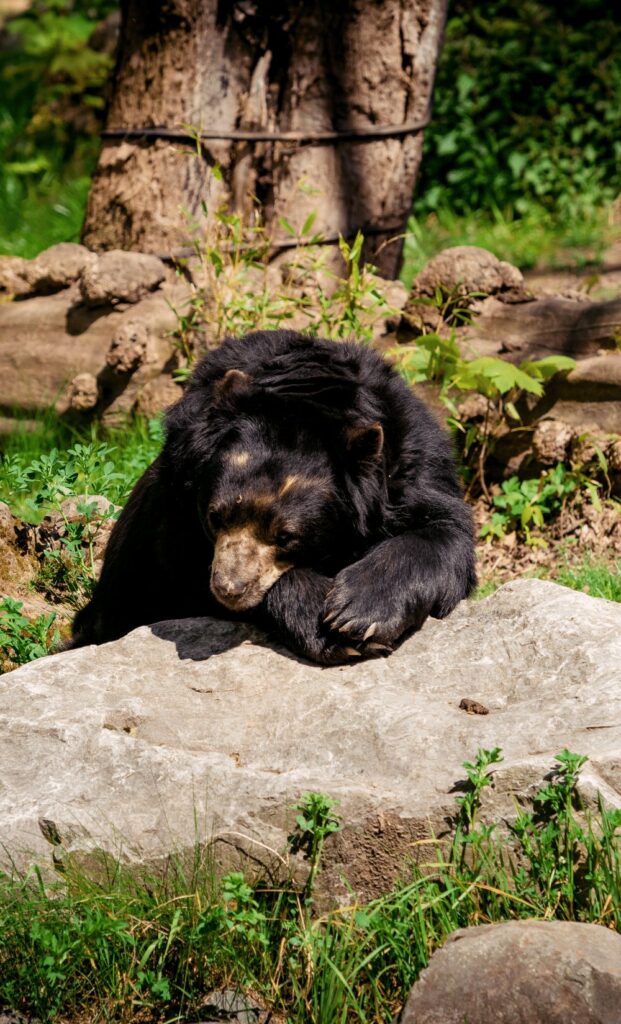
Despite the hum of a city just beyond its borders, the forest has maintained its wild essence.
Bears roam its diverse landscapes, from the chaparral-covered foothills to the higher pine-clad elevations, all under the watchful gaze of the iconic San Gabriel Mountains.
For those drawn to this forested haven, keeping the well-being of its wildlife in mind becomes paramount. When camping, it’s essential to store food securely, utilizing bear-proof containers or lockers often provided at campgrounds like Buckhorn or Chilao.
Always maintain a respectful distance from any wildlife encountered, understanding that this is their home.
And as evening descends, with the lights of Los Angeles twinkling in the distance, remember to reduce noise, letting the forest’s nocturnal symphony play undisturbed.
The Angeles National Forest is more than just an escape; it’s a reminder of the delicate balance between urban life and nature, and the shared responsibility we hold in ensuring this balance endures.
Also Read: EXPLORING THE ANGELES NATIONAL FOREST: 12 ANIMALS WE SAW ON OUR HIKE
Shasta-Trinity National Forest
Sprawled across the rugged heart of Northern California, the Shasta-Trinity National Forest claims the distinguished title of the state’s largest national forest.
A mosaic of towering peaks, including the majestic Mount Shasta, this vast expanse weaves tales of geological wonders, ancient woodlands, and the undulating embrace of pristine waters.
Amidst this diverse tableau, the California black bear treads with a graceful, yet wild, elegance.
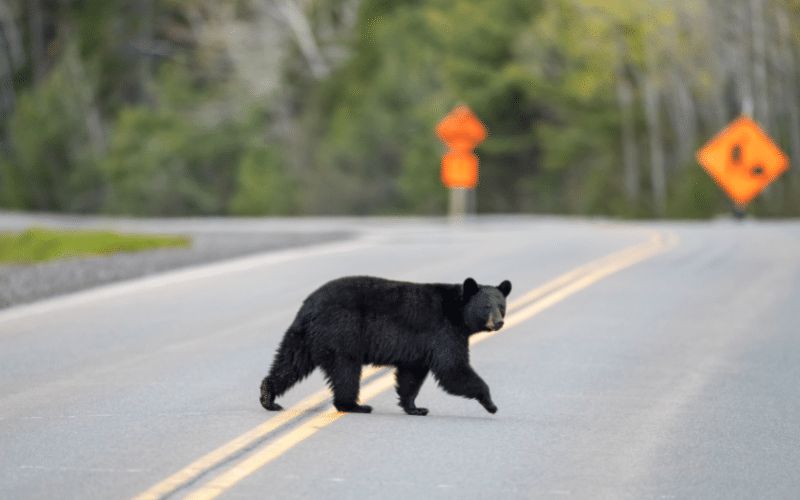
The forest’s vastness, punctuated by shimmering lakes, roaring rivers, and dense woodland stretches, creates a veritable haven for these creatures.
The shores of Lake Shasta, with its intricate labyrinth of inlets and coves, often resonate with the soft patter of bear paws, especially during the tranquil hours of dawn and dusk.
Further, the serpentine flow of the Trinity River and its tributaries offers both sustenance and refuge, attracting bears to its banks.
Deep within the woodland realms, areas like the Weaverville Basin and the shadowed groves near Coffee Creek become stages for nature’s quiet ballet.
Here, bears forage, play, and rest, their movements a testament to the wilderness that the Shasta-Trinity National Forest safeguards.
A journey through this forest is a dance with the wild, where every bend in a trail or ripple in the water could herald an encounter with one of California’s most iconic inhabitants, reminding us of the vast wonders our world still holds.
The Role of Bears in the Ecosystem
In the intricate tapestry of life, bears stand out as formidable apex predators, orchestrating a delicate balance within the ecosystems they inhabit.
These majestic creatures, with their powerful physiques and keen senses, play a pivotal role in shaping and maintaining the health and diversity of forest ecosystems.
As apex predators, bears keep prey populations in check, ensuring that species like deer or elk don’t overgraze, thereby protecting plant biodiversity. This, in turn, aids in soil health, as diverse plant life ensures rich soil strata teeming with beneficial microbes.
Moreover, bears are great dispersers of seeds. Through their diet, which often includes berries and fruits, they inadvertently sow the seeds of these plants, aiding in their propagation.
Their foraging behavior, digging for tubers or insects, aerates the soil, promoting healthier plant growth.
In essence, bears are not just mere inhabitants of the forest; they are its stewards, guardians of a balance that ensures the forest’s vitality and continuity.
Their presence and activities weave a complex, symbiotic relationship, highlighting the interconnectedness of all life.
Other Wildlife to Look Out For
Venturing into California’s national forests is akin to stepping into a living tapestry of nature, where every thread represents a unique form of life.
Beyond the majestic presence of bears, these wild expanses are home to a myriad of creatures, each playing their part in the ecosystem’s harmony.
From the elusive mountain lion, with its amber gaze, to the nimble-footed deer darting through meadows, each encounter is a testament to nature’s richness.
You might hear the haunting call of the owl, glimpse the flash of a trout in a crystal-clear stream, or witness the playful antics of squirrels amidst the trees.
Yet, with the privilege of such encounters comes a profound responsibility. Every creature, big or small, deserves respect.
It’s vital to maintain a safe distance, avoid feeding animals, and tread lightly, ensuring that our presence doesn’t disrupt their natural behaviors or habitats.
In these forests, we are but visitors, and it’s upon us to cherish and protect the intricate dance of life that unfolds around us.
Safety Tips for Visitors
Embarking upon an adventure in the heart of nature’s realms brings with it not just moments of wonder, but also the imperative of preparedness and respect.
Safety, especially in territories shared with creatures like bears, is paramount.
Firstly, storing food appropriately is crucial. Always utilize bear-proof containers or lockers, ensuring no scents lure these curious creatures into human domains.
When camping, hang food items at least 10 feet off the ground and 4 feet away from tree trunks to prevent access.
Should you have the rare privilege of encountering a bear, it’s vital to remain calm. Avoid direct eye contact, which can be perceived as a threat, and slowly back away without turning your back. Never run, as this can trigger a chase instinct.
The adage “A fed bear is a dead bear” carries deep significance. Bears that become accustomed to human food often lose their natural wariness, becoming potential threats. Such bears might have to be relocated or, tragically, euthanized.
Thus, by ensuring bears don’t associate humans with food, we play a part in their survival and the harmonious coexistence of man and nature.
Conclusion
California’s protected lands are a testament to nature’s unparalleled splendor, a mosaic of ecosystems where life thrives in myriad forms.
From the towering redwoods to the serene alpine lakes, these places encapsulate the very essence of the Earth’s beauty and the delicate balance of life.
Yet, with the privilege of experiencing such wonders comes a responsibility. As visitors, it’s imperative to tread with awareness and reverence, understanding that we are mere guests in these age-old sanctuaries.
Every footprint we leave, every action we take, reverberates within this intricate web of life. Let’s ensure that our presence echoes with respect and admiration, preserving these lands for generations to come.


